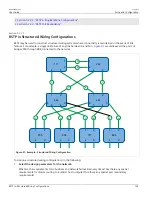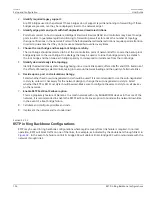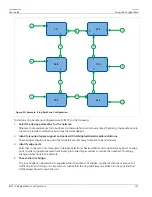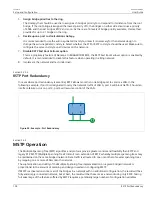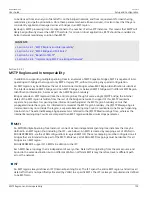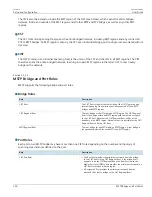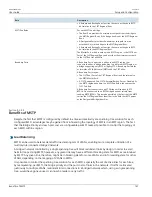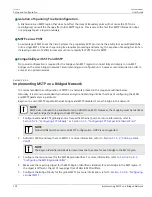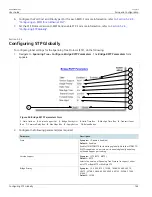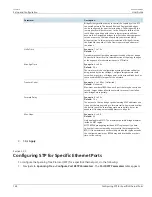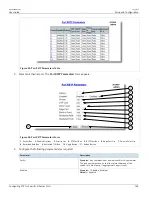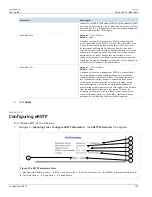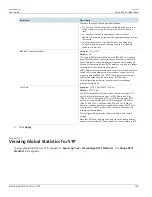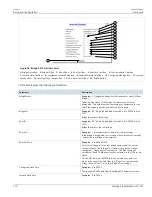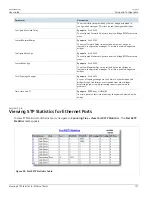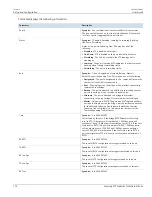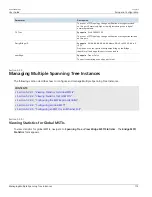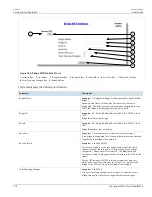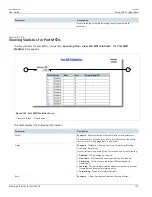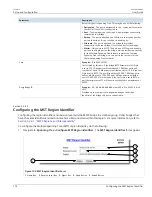
RUGGEDCOM ROS
User Guide
Chapter 5
Setup and Configuration
Benefits of MSTP
161
Role
Description
• Alternate and Backup Ports function the same as they do in RSTP,
but relative to the CIST Regional Root.
MSTI Port Roles
For each MSTI on a bridge:
• The Root Port provides the minimum cost path from the bridge to
the MSTI Regional Root, if the bridge itself is not the MSTI Regional
Root.
• A Designated Port provides the minimum cost path from an
attached LAN, via the bridge to the MSTI Regional Root.
• Alternate and Backup Ports function the same as they do in RSTP,
but relative to the MSTI Regional Root.
The Master Port, which is unique in an MSTP region, is the CIST Root
Port of the CIST Regional Root, and provides the minimum cost path
to the CIST Root for all MSTIs.
Boundary Ports
A Boundary Port is a port on a bridge in an MSTP region that
connects to either: a bridge belonging to a different MSTP region, or
a bridge supporting only RSTP or legacy STP. A Boundary Port blocks
or forwards all VLANs from all MSTIs and the CIST alike.
A Boundary Port may be:
• The CIST Root Port of the CIST Regional Root (and therefore also
the MSTI Master Port).
• A CIST Designated Port, CIST Alternate/Backup Port, or Disabled. At
the MSTP region boundary, the MSTI Port Role is the same as the
CIST Port Role.
A Boundary Port connected to an STP bridge will send only STP
BPDUs. One connected to an RSTP bridge need not refrain from
sending MSTP BPDUs. This is made possible by the fact that the MSTP
carries the CIST Regional Root Identifier in the field that RSTP parses
as the Designated Bridge Identifier.
Section 5.2.3.3
Benefits of MSTP
Despite the fact that MSTP is configured by default to arrive automatically at a spanning tree solution for each
configured MSTI, advantages may be gained from influencing the topology of MSTIs in an MST region. The fact
that the Bridge Priority and each port cost are configurable per MST makes it possible to control the topology of
each MSTI within a region.
Load Balancing
MSTP can be used to balance data traffic load among sets of VLANs, enabling more complete utilization of a
multiply interconnected bridged network.
A bridged network controlled by a single spanning tree will block redundant links by design, in order to avoid
harmful loops. Using MSTP, however, any given link may have a different blocking state for MSTI, as maintained
by MSTP. Any given link, therefore, might be in blocking state for some VLANs, and in forwarding state for other
VLANs, depending on the mapping of VLANs to MSTIs.
It is possible to control the spanning tree solution for each MSTI, especially the set of active links for each tree,
by manipulating, per MSTI, the bridge priority and the port costs of links in the network. If traffic is allocated
judiciously to multiple VLANs, redundant interconnections in a bridged network which, using a single spanning
tree, would have gone unused, can now be made to carry traffic.









